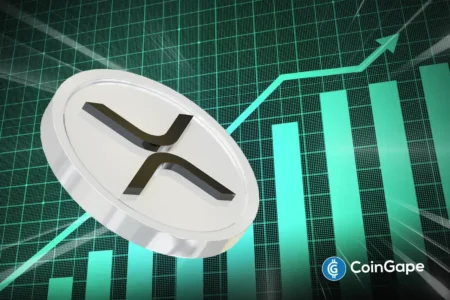Title: The SEC’s Definition of Covered Stablecoins: A Significant Step Towards Regulatory Clarity in Cryptocurrency
In recent developments, the U.S. Securities and Exchange Commission (SEC) has provided much-needed clarity regarding the regulatory status of certain stablecoins, particularly those pegged to the U.S. dollar. These so-called "Covered Stablecoins" are now distinctly recognized as non-securities, a decision aimed at promoting regulatory transparency in the burgeoning cryptocurrency landscape. The SEC’s statement is timely, as it follows the Senate committee’s approval of the incoming SEC chair and paves the way for more structured legislation around cryptocurrencies and blockchain technology.
The SEC’s definition of Covered Stablecoins centers around their design and intended use. These digital assets maintain a stable one-to-one value with the U.S. dollar and are backed by a reserve of low-risk and highly liquid assets. This structure ensures that they can be redeemed for U.S. dollars at any time, making them a reliable medium of exchange. Notably, the SEC emphasized that these stablecoins are intended for transactional purposes, transfer of funds, and as a store of value, rather than investment vehicles meant to generate profits. This aspect is vital, as it delineates the operational framework and regulatory landscape for such assets.
Furthermore, the SEC has clarified the marketing practices surrounding Covered Stablecoins. According to the agency, these digital tokens should not be marketed as investment products promising returns or profits. The commission’s statement highlights that such stablecoins do not confer governance rights or financial returns based on the issuer’s performance. This regulatory clarification aligns with the recently passed STABLE Act, which establishes a comprehensive framework for USD-pegged stablecoins. The SEC’s position aims to alleviate any potential confusion about the classification of these stablecoins while reinforcing their primary role in transactional ecosystems without investment connotations.
An essential aspect of the SEC’s statement is the emphasis on reserve requirements for stablecoins. Covered Stablecoins must maintain a stable price that effectively reflects the value of the U.S. dollar. Unlike cryptocurrencies such as Bitcoin and Ethereum, which are known for their price volatility, Covered Stablecoins provide a more stable option for users who need a digital currency that reliably acts as a medium of exchange. The SEC has made it clear that these tokens cannot be viewed as securities that promise profits; their utility rests solely in their ability to facilitate transactions and serve as a stable store of value.
In assessing whether Covered Stablecoins should be classified as securities, the SEC applied two legal benchmarks known as the Reves and Howey tests. The Reves test established that Covered Stablecoins are more similar to traditional commercial instruments than to securities. Meanwhile, the Howey test assesses the buyer’s expectations, focusing on whether they purchase the asset for profits beyond mere price appreciation. By employing these tests, the SEC concluded that Covered Stablecoins serve primarily as a medium of exchange, reinforcing their classification outside the realm of securities regulations.
This regulatory clarification comes at an opportune time as Congress is actively working on broader legislation governing digital assets. While the SEC’s decision provides essential insights into the status of Covered Stablecoins, the regulatory landscape remains complex, particularly concerning other digital assets that could fall under securities regulations. The U.S. government’s ongoing efforts to provide a comprehensive regulatory framework for cryptocurrencies reflect its commitment to fostering innovation while ensuring investor protection.
As the cryptocurrency market continues to evolve, the SEC’s recent statement on Covered Stablecoins serves as a pivotal moment in establishing clear regulatory guidelines. This clarity benefits not only market participants but also aims to foster trust and growth within the cryptocurrency ecosystem. As stakeholders await further legislative developments, the SEC’s positioning on stablecoins marks a significant step towards a more structured and robust regulatory landscape for digital assets in the United States.
In conclusion, the SEC’s determination that Covered Stablecoins should not be classified as securities under federal laws is a promising development for cryptocurrency enthusiasts and investors alike. By distinguishing these stablecoins from traditional securities, the SEC facilitates their greater adoption as effective financial tools in payments and transactions. As the digital landscape continues to expand, the need for clear regulations and guidelines takes center stage, ultimately contributing to a healthier and more robust cryptocurrency market going forward.
















